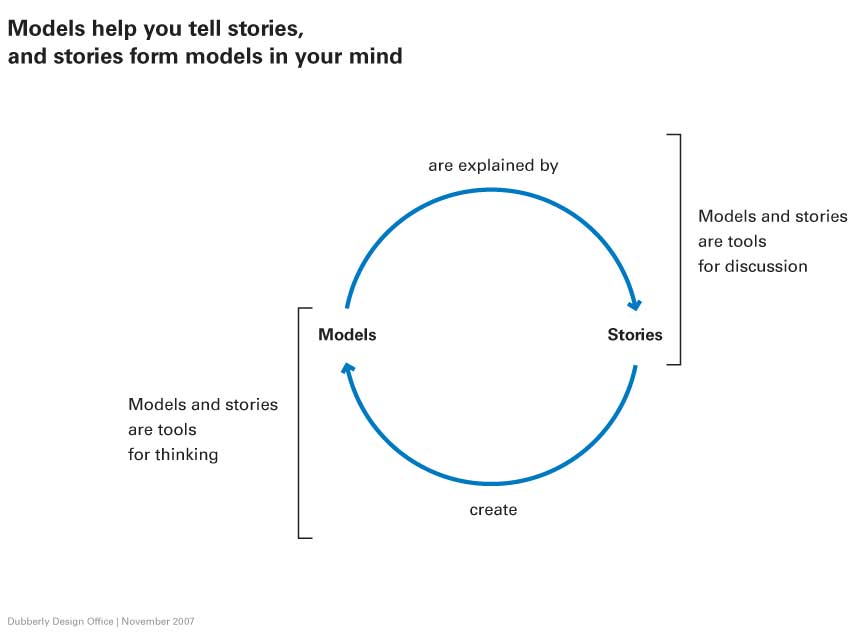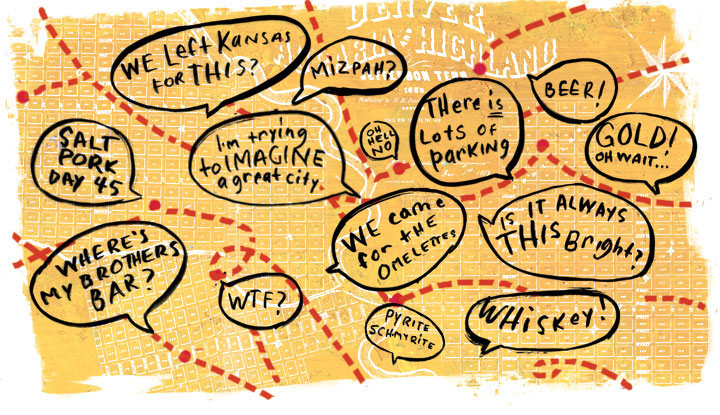While doing some research on storytelling yesterday, I came across this quote from Shakespeare’s Henry IV, Part 2:
“When we mean to build, we first survey the plot, then draw the model.”
Odd, I said to myself. That’s exactly what we do at Image, Space, Object; use narratives and models to inform the design process for small teams working on highly collaborative and iterative projects. And that, in turn, reminded me of an image that Hugh Dubberly sent to me after the last ISO Conference that highlights the relationship between stories and models:

Okay, maybe Shakespeare was speaking about physically surveying the plot (more in space than time), but the idea is very similar. Look at the situation. Model it. Reassess. Replot. Remodel. Present.
August 5-8, 2010 at Rocky Mountain College of Art and Design (RMCAD) will mark the 6th Image Space Object conference. I have been lucky to serve as a speaker and studio mentor for all six, and believe that, even with all the conferences and workshops I’ve attended, it is the most engaging and unusual.
There are some fabulous speakers at the conference (and it tends to be very much the same crew each year). This year, in addition to the organizers Mike and Kathy McCoy and Fred Murrell, studio mentors include Hugh Dubberly of the Dubberly Design Office (who has been at ISO each year, I believe), Rick Robinson (Founder of eLab and formerly at Sapient), Chris Conley (from IIT and Gravity Tank), and Tucker Viemeister (director of the Lab at Rockwell Group). New this year at ISO is Shelley Evenson of Carnegie Mellon, and I’m very much looking forward to meeting her.
But, what makes ISO different from other conferences is that the participants, errr, participate. As Mike McCoy is fond of saying, this is more of a graduate seminar than a series of lectures. Each attendee works together with their team and their studio mentors to build an original solution to a vexing (but entertaining) design problem. The challenge forces the team to work together in a multidisciplinary way to devise and present their solution.
We’re calling this year’s conference “Tools for Transformation”, and that’s exactly what it offers those who take part. Tools for collaboration, ideation, and expression, with a focus on rapid, low-fidelity, down and dirty prototypes. The entire conference is limited to just 40 participants, so it is truly a unique opportunity to get in and get your hands dirty.
Here is how Rick Griffith of Matter described his experience at last years conference:
Find our more at imagespaceobject.com.
